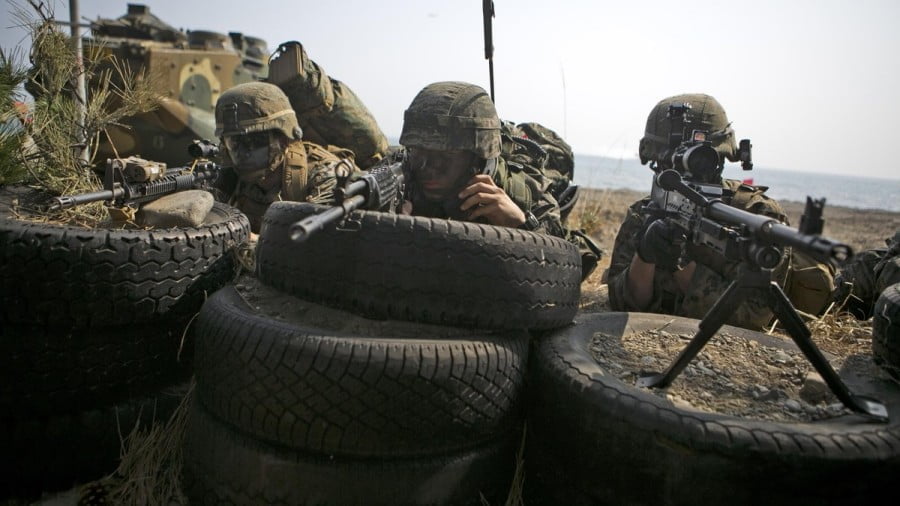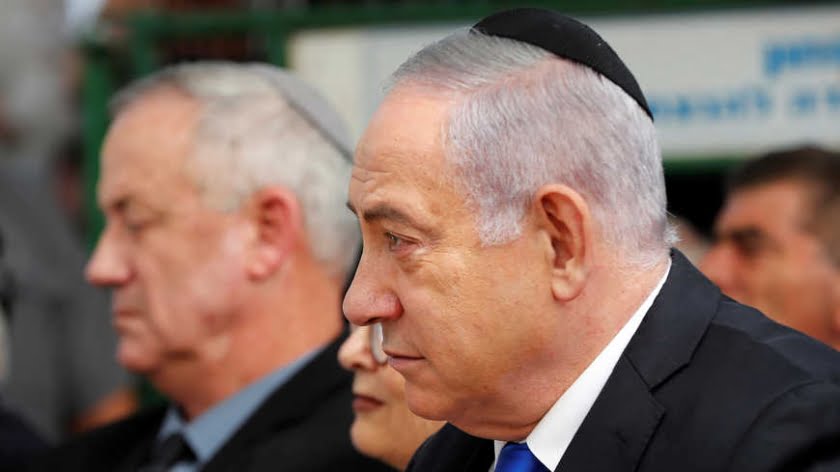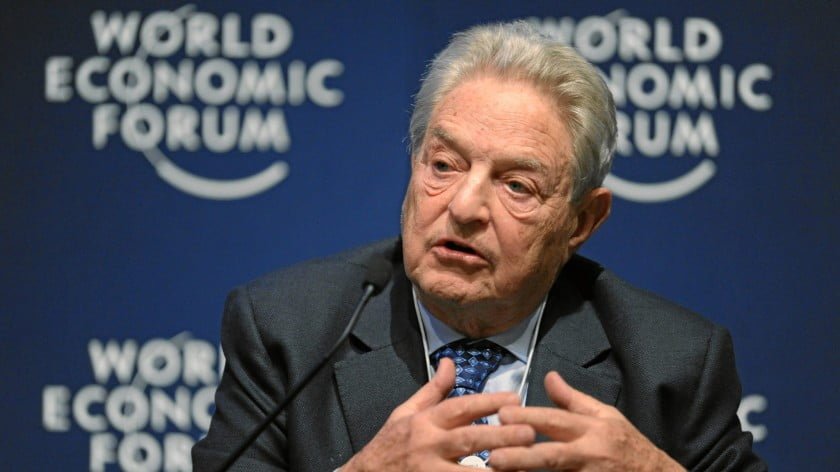Are North and South Korea Rushing Blindly Towards the Danger Line?
The events we all can see unfolding on the Korean peninsula at the moment are a good example of the “security dilemma,” in which a country upgrades its military potential to protect itself from its neighbor, but that neighbor sees its actions as an act of aggression and upgrades its own military, thus triggering an arms race.
On October 31 the US, South Korean and Australian militaries began their large-scale Vigilant Storm drills, aimed at testing the participants’ capacities when conducting joint operations. The exercises, under the name Vigilant Ace, have been conducted annually since 2015. Also on October 31 the US nuclear submarine Key West, equipped with Tomahawk rockets with a range of 2,500 km, entered the South Korean port of Busan.
Still on October 31, North Korea issued an official written statement declaring that “the situation in the Korean Peninsula and its vicinity has entered the serious confrontation phase of power for power again due to the ceaseless and reckless military moves of the US and South Korea”. The statement further noted that in August this year South Korea hosted the major joint exercises Ulchi Freedom Shield, and in September and October it hosted naval exercises involving a naval strike group headed by the aircraft carrier Ronald Reagan, as well as the largest aerial exercises in its history. The North Korean statement continues, “All the facts clearly show that the US nuclear war scenario against the DPRK has entered the final stage… If the US continuously persists in the grave military provocations, the DPRK will take into account more powerful follow-up measures.”
On November 1, Pak Jong Chon, a secretary of the Central Committee of the DPRK Workers’ Party, also published a statement in which he noted that the name Vigilant Storm was reminiscent of the name Desert Storm, the US military operation against Iraq at the beginning of the 1990s. He added that “if the US thinks of playing on the Korean peninsula the way it had bombed weak countries at any time and made a mockery of the destiny of sovereign states at the end of the last century, it will be a daydream and a fatal strategic mistake”.
On November 2, North Korea launched at least 17 rockets of different types at targets in the Yellow Sea and the Sea of Japan. In response South Korea launched three ground-to-air missiles. South Korean F-15K and KF-16 fighter jets took off and fired two Slam-ER precision air-to-ground missiles and a Spice 2000 smart bomb which passed over the Northern Limit Line, penetrating into North Korea’s territorial waters by about the same distance as the North Korean missile had penetrated into South Korean waters.
On November 3, North Korea launched a Hwasong-17 intercontinental ballistic missile from the Sunan air field in the outskirts of Pyongyang, but South Korea dismissed the launch as a failure. Another two short-range missiles were launched from Sunchon, in South Pyongan province, South Korean military sources claim. Later, three more ballistic missiles were launched from Koksan County, in North Hwanghae Province, into the Sea of Japan. At around 23.30 North Korea fired some 80 artillery shells into the buffer zone in the Sea of Japan.
In response to the intercontinental ballistic missile launches, on November 3 the US and South Korea decided to extend the Vigilant Storm exercises until November 4, 2022. Also on November 3 they agreed on specific categories of cooperation for the purpose of “extended deterrence” in the face of North Korea’s threats. In a communique issued by the South Korean Defense Minister Lee Jong-sup and his US counterpart Lloyd Austin, the two parties agreed to strengthen their defense capacities, cooperate on the exchange of information and on the implementation of the agreement to contain the nuclear and missile threats from North Korea, and to continue to hold joint military exercises. Lloyd Austin commented that any nuclear attack – including a tactical nuclear strike – by North Korea against any US ally would “result in the end of the Kim Jong-un regime.”
In a press statement, Pak Jong Chon immediately responded that the decision by the US and South Korea to extend the Vigilant Storm exercises was “a very dangerous and wrong choice.” He added, “The irresponsible decision of the US and South Korea is shoving the present situation caused by provocative military acts of the allied forces to an uncontrollable phase.”
On November 4, a spokesman for the North Korean Foreign Ministry published a press statement warning that “if the US does not wish to see a grave situation hurting its own security interests to happen, it should stop at once the provocative combined air drill Vigilant Storm.” According to the statement, the exercises which North Korea launched after the beginning of Vigilant Storm are a “due reaction and action warning to the hostile provocations.”
On November 4, between 11.00 and 15.00, the South Korean military detected about 180 North Korean warplanes flying within South Korean airspace. In response, Seoul urgently mobilized 80 F-35A fighter aircraft and put its air-defense systems on alert. In addition, it scrambled another 240 aircraft that were taking part in Vigilant Storm.
Also on November 4 the USA called on the UN Security Council to bring North Korea to account for its provocations, including its intercontinental ballistic missile launches. In remarks on North Korea’s actions, Linda Thomas-Greenfield, US Ambassador to the United Nations, stated that “over the last week and a half, the DPRK has exacerbated an extremely worrisome trend that we have seen all year: an increased number of launches, in flagrant violation of the Security Council resolutions, destabilizing and threatening rhetoric, and continued escalations.” China and Russia both refused to support the initiative, accusing the US and South Korea of provoking North Korea’s rocket launches. According to Zhang Jun, China’s Ambassador to the UN, “the turn of events and root causes that have led to the current situation on the peninsula are clear to all. The recent DPRK launches do not happen in isolation, and are directly linked to the words and deeds of relevant parties.” Anna Evstigneeva, Russia’s deputy Ambassador to the UN also blamed the heightened tensions on “the desire of Washington to force Pyongyang to unilaterally disarm by using sanctions and exerting pressure and force.”
On November 5, North Korea launched 4 short-range ballistic missiles into the Yellow Sea. On the same day it was reported that on the last day of Vigilant Storm the US had sent two B-1B Lancer strategic bombers to take part in the exercises to practice attacks on North Korean nuclear facilities. This was the first time B- 1Bs had been deployed in the Korean peninsula since 2017.
From November 7 to 10, North Korea conducted its Taeguk-22 command post military exercises. These exercises have been held every year since 1995. This year they focused on practicing responses to emergencies, including putting the armed forces on heightened readiness to engage in combat operations. The exercises did not include any ground maneuvers, but instead relied on computer modeling.
On the same day the General Staff of the North Korean People’s Army presented its views on South Korea’s Vigilant Storm exercises.
In brief, what is the current situation, and how can we expect it to develop? There seems no end in sight to the escalation, and it looks almost as if both parties are racing, rather than sleepwalking, towards the danger line. It is also worth noting that while North Korea’s launches are headline material, South Korea’s military exercises, which have been continuing for four straight months, have received much less international attention. In August South Korea and the USA conducted the Ulchi Freedom Shield exercises, followed by exercises with the USS Ronald Reagan (CVN-76) aircraft carrier in September, the Hoguk exercises, and naval exercises in the Yellow Sea in October, and Vigilant Storm in November.
Events in this vicious circle are speeding up, with each party labelling the other as an aggressor: “The enemy is carrying out military provocations, while we are simply conducting exercises in self defense.” Each party is warning that it will strike back if its opponent crosses a “red line.” However, as yet the only incident which could be qualified as crossing a red line has been North Korea’s firing of missiles into South Korea’s territorial waters, and it is not clear whether or not that was an accident. Even firing into the buffer zones is an acceptable alternative to remilitarizing these areas.
Despite the fact that each side has threatened to withdraw from the Comprehensive Military Agreement, which established the maritime buffer zone, both North and South Korea are complying with its terms – which is a hopeful sign. Nevertheless, if, as the present author suspects, Yoon Suk-yeol has decided to focus on North Korea in order to give him a free hand in his relations with Russia and China, then he appears to have played his cards badly. North Korea is interpreting his actions very differently, and this is fueling tensions.
In short, as the present author sees it, the two countries are getting very close to the danger line, but they are still able to stop. The main thing is to avoid a situation where one side leaves it to the last moment to step on the brakes – and then finds that their momentum keeps carrying them forwards across the line of no return.







